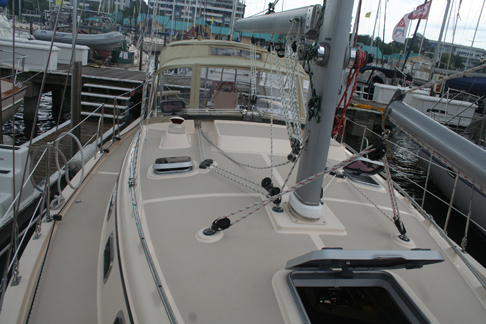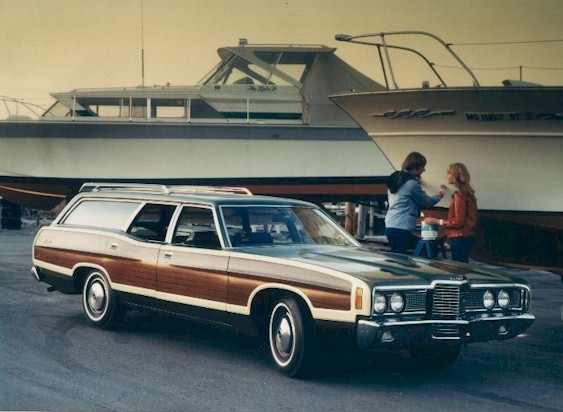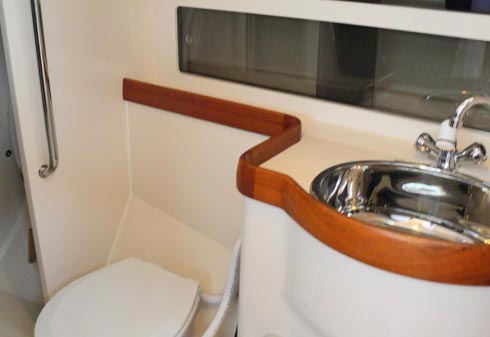
Do we still want exterior wood on our boats today? Is synthetic a fair substitute?
When we stepped aboard the 36-foot Island Packet Estero for a test sail, I guess I shouldnt have been surprised to see that the familiar teak caprail was gone. For more than 30 years, the varnished caprail (usually finished in Cetol these days) has been one of Island Packets signature features.
With a teak bowsprit and additional teak trim in the cockpit, IP yachts held the course that most production boatbuilders had left behind by the mid-1990s. If you see exterior wood on a Hunter or Beneteau these days, chances are its synthetic teak. That teak toerail on the new Beneteau 34? Synthetic. The Hunter e33we tested had teak pushpit seats, the rest-including a cockpit table top (to keep the salsa bowl from sliding, I suppose)-was synthetic. Catalina dropped exterior wood years ago. If history is any guide, even the faux wood trend may soon run its course. “Good riddance,” some might say.

There was a time, as some of us fondly remember, when real wood-trimmed cars were the rage. Then faux-grained vinyl replaced the real stuff, sustaining the illusion that a gas-guzzling, eight-cylinder station wagon was somehow consistent with a “back-to-nature” ethos. The faux-wood trend lasted longer than most carmakers will care to admit. Beginning with the vinyl grain on the Ford Country Squire station wagon of the 1960s, Americas love affair with faux wood on cars lasted 30-plus years. All told, the transition from real wood to none at all took nearly 60 years. (The vinyl-sided Chrysler Town and Country minivan of the 1990s clung to a look that traced back to the classic T&C Barrelback of 1941-42.)
I imagine that production boatbuilders will take much longer to abandon wood. While the functional value of wood on boats has diminished, tradition and aesthetic appeal run deep.
Maine boatbuilders like Morris and Sabre have long histories of building with wood, and Tartan still trims its boats in real teak. But wood trim also adds to the bottom line, and except for teaks excellent nonskid properties, there is little practical payback.

I wasnt surprised to see the new Leadership 44, built by Morris Yachts for the U.S. Coast Guard Academy had only a teak cockpit sole. I almost expected to see no wood below. Then-surprise, surprise-wood trim in abundance, including an elegant fiddle around the head sink, a notorious trouble spot for wood. (I took this as a reflection of Kyle Morris’s committment to keeping his talented craftsmen working, or perhaps to give the Coast Guard recruits something to practice their maintenance skills on.)
Are we seeing the last of the wood-trimmed boats? Walk the docks in any marina with more than 50 sailboats, and it is a pretty sure bet that theres a caprail or coaming that needs refinishing. Horizontal surfaces, exposed to the full force of the suns UV rays, are the toughest test of wood finishes. Even our best wood finishes from our past tests will wither under these conditions in short order.
Despite the material’s drawbacks I believe there will always place for teak trimmed boats-just as there will always be wooden boats. Teak is a beautiful, durable material for boatbuilders, but the challenge is ensuring it is either reclaimed orharvested sustainably. Although the maintenance of exterior teak can overwhelm an owner who has little time to carry out the regular maintenance, there are few boat maintenance jobs that offer the instant (almost) gratification of laying down a glossy coat of varnish.








































That’s really informative post. I appreciate your skills. Thanks for sharing.